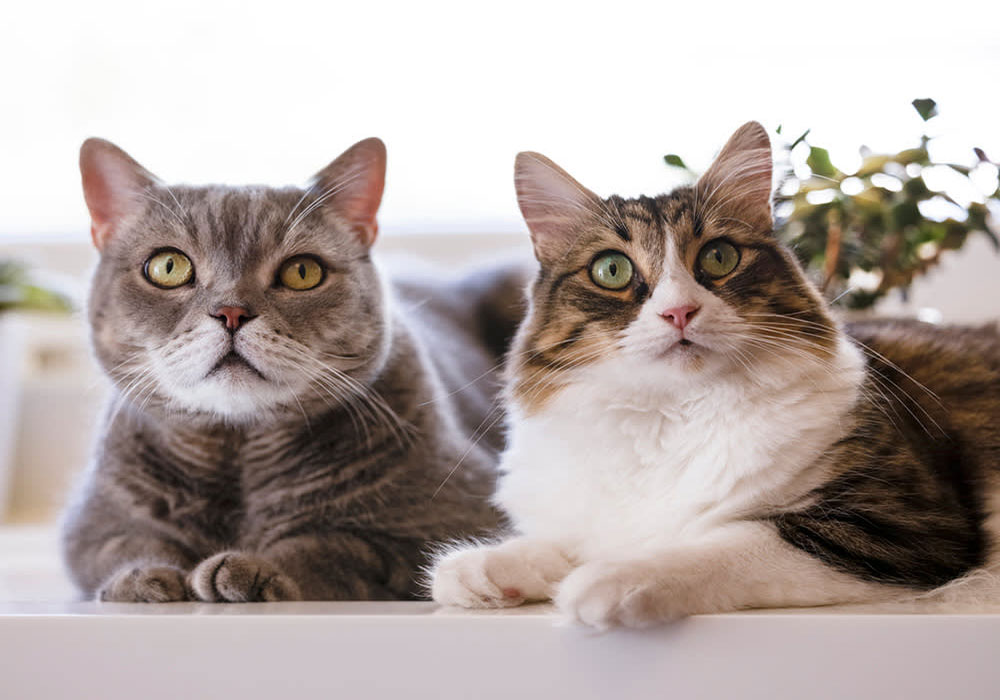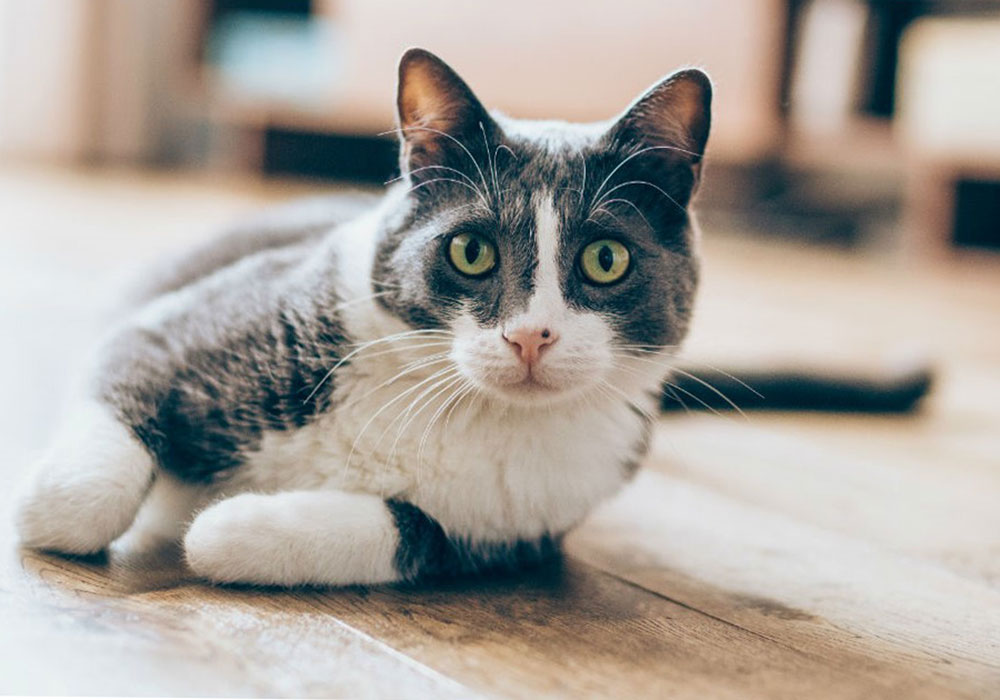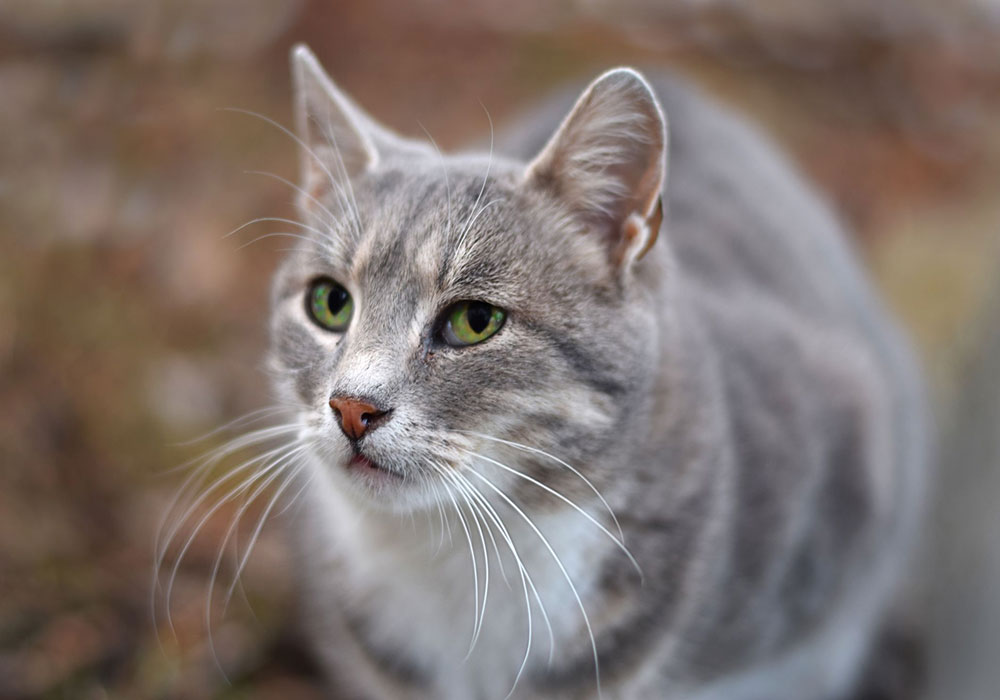Physical Differences Between Male And Female Cats
From birth, there are physical distinctions between male and female cats, such as in their genitalia. At first, it can be tricky to tell the biological sex of a kitten, but there are specific indicators you can look for.
For female kittens, the vulva appears as a vertical line just beneath the anus, resembling an upside-down exclamation point. In male kittens, the distance between the anus and the genitals is greater due to space for testicle development. The male’s penis looks like a small dot or circle below the anus, making the male genitalia resemble a colon in appearance.
These differences persist as the cat matures, but in adult males, the testicles become more prominent. However, if a male cat is neutered, distinguishing its sex becomes more challenging, though the shape and location of the opening under the anus can still be helpful.
Other physical differences between male and female cats may include:
Size: Male cats are generally larger than females, particularly if they haven’t been neutered. This difference is more noticeable in some breeds like the Maine Coon, Norwegian Forest Cat, and Ragdoll.
Coat: Unneutered male cats often grow a thicker, longer coat compared to females. Some breeds, like male Persians or Maine Coons, even develop a ruff (mane) around the neck.
Color: Some coat patterns are linked to the cat’s sex. For instance, calico and tortoiseshell patterns are typically found only in females. Calico cats display a tricolor pattern of orange, black, and white (or their diluted versions: cream, gray, and white). Tortoiseshell cats show a mix of orange and black or cream and gray. Additionally, approximately 80% of orange cats are male.
Face and Head: Intact male cats often have broader heads and thicker skulls. They also develop more prominent cheeks, known as “tomcat jowls,” and their whisker pads tend to be thicker.
Lifespan: Female cats usually have a longer lifespan, with an average of around 15 years, compared to 13 years for unneutered males. Neutered males, however, live significantly longer—up to 62% longer than intact males.
These differences are most noticeable in intact (non-spayed or neutered) cats. Spaying or neutering alters some aspects of development, especially if done early in life.

Differences In Temperament, Personality And Behavior
While genetics, environment, early life experiences, and overall health all influence a cat’s personality, there are a few behavioral patterns that tend to differ between male and female cats—especially in intact cats.
Roaming Behavior
Intact male cats are more likely to wander off, driven by hormones that encourage them to seek mates. These cats may roam long distances and may even disappear for days. Female cats, even when in heat, are less likely to roam as far. Neutering male cats often helps reduce this roaming behavior.
Social Behavior
“Affiliative behavior,” which includes activities like grooming, nose-touching, and cuddling, helps cats build or maintain bonds. While both male and female cats engage in this, research shows that outdoor females tend to display this behavior more frequently than males. However, indoors, the sex of the cat doesn’t seem to impact how often affiliative behavior occurs.
Aggression
Aggression is common in both sexes for various reasons, including territorial disputes or mating competition. However, unneutered males may display more aggression towards other males. Spaying or neutering often reduces these aggressive tendencies.
Heat Cycle Behavior
Female cats who aren’t spayed exhibit distinct behaviors when they’re in heat. They might become more affectionate, vocal, restless, or engage in excessive grooming. Spaying eliminates these behaviors associated with the heat cycle.
Urine Spraying And Marking
Both male and female cats may spray urine to mark their territory, though intact males are more likely to do so. Neutering can reduce or eliminate this behavior. However, even some neutered cats—around 10% of males and 5% of females—continue to spray due to stress, changes in their environment, or underlying health issues.
Color-Linked Personality Traits
Some cat owners believe that a cat’s coat color can give clues about its personality. For example, tortoiseshell cats are thought to be sassy and feisty, a term known as “tortitude.” Orange cats are often considered the friendliest, while calicos are believed to be energetic. However, each cat has a unique personality regardless of its coat color. The study showing that calico and tortoiseshell cats act differently was based on owner perceptions, which may have been influenced by preconceived notions.
Male Vs Female Cats: Pros And Cons
Male Cats Pros
Affectionate: Often enjoy cuddling and being close to their owners.
Playful: Male cats tend to maintain a playful, kitten-like attitude throughout their lives.
Easygoing: Generally more adaptable and less fussy than females.
Less Territorial: Neutered males are less likely to display territorial behaviors like marking.
Male Cats Cons
Spraying: Unneutered males are more prone to marking territory with urine.
Roaming: Intact males may wander far in search of a mate.

Female Cats Pros
Less Likely to Spray: Spayed females usually don’t engage in urine marking.
Lower Aggression: Generally, female cats are less prone to aggression.
Adaptable: They tend to adjust to changes in their environment more easily.
Female Cats Cons
Heat Cycles: Unspayed females can be noisy and restless when in heat.
Pregnancy Risk: If not spayed, females can become pregnant, leading to additional responsibilities.
Independence: Some female cats may be more independent and less inclined to cuddle.











